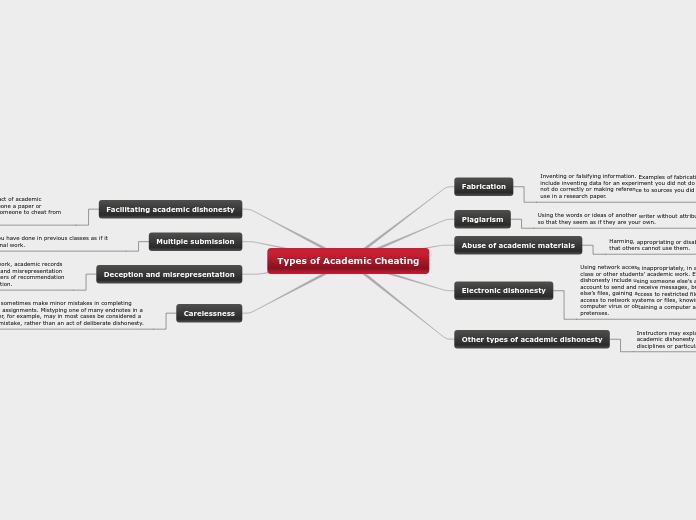Types of Academic Cheating
Fabrication
Inventing or falsifying information. Examples of fabrication include inventing data for an experiment you did not do or did not do correctly or making reference to sources you did not use in a research paper.
Plagiarism
Using the words or ideas of another writer without attribution, so that they seem as if they are your own.
Abuse of academic materials
Harming, appropriating or disabling academic resources so that others cannot use them.
Electronic dishonesty
Using network access inappropriately, in a way that affects a class or other students’ academic work. Examples of electronic dishonesty include using someone else’s authorized computer account to send and receive messages, breaking into someone else’s files, gaining access to restricted files, disabling others’ access to network systems or files, knowingly spreading a computer virus or obtaining a computer account under false pretenses.
Other types of academic dishonesty
Instructors may explain in their syllabi other types of academic dishonesty relevant to the work in particular disciplines or particular courses
Facilitating academic dishonesty
Helping someone else to commit an act of academic dishonesty. This includes giving someone a paper or homework to copy from or allowing someone to cheat from your test paper.
Multiple submission
Submitting work you have done in previous classes as if it were new and original work.
Deception and misrepresentation
Lying about or misrepresenting your work, academic records or credentials. Examples of deception and misrepresentation include forging signatures, forging letters of recommendation and falsifying credentials in an application.
Carelessness
Students sometimes make minor mistakes in completing academic assignments. Mistyping one of many endnotes in a long paper, for example, may in most cases be considered a careless mistake, rather than an act of deliberate dishonesty.
